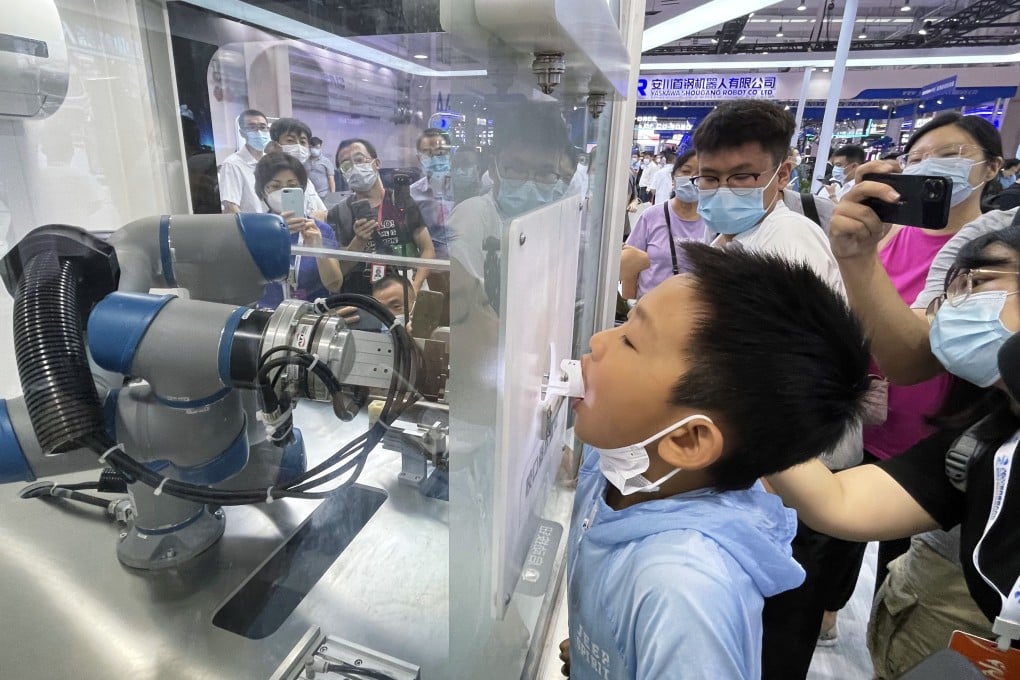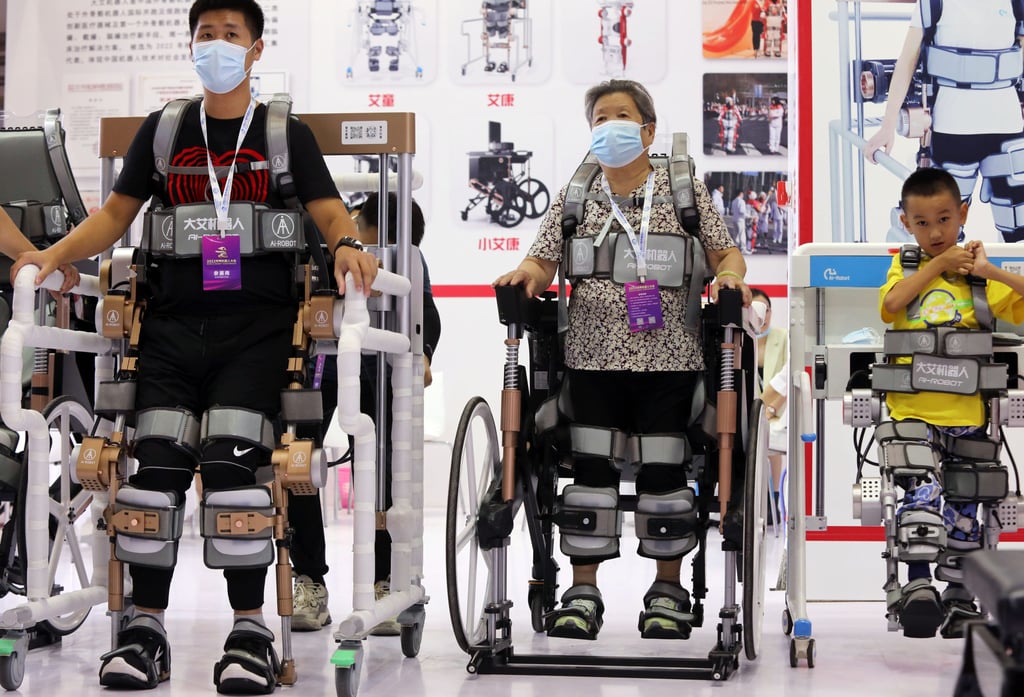Chinese-built robot that can do quick Covid-19 oral swab tests, other pandemic-related automata shine in Beijing tech show
- Covid-19 and healthcare-related robotic applications made up a quarter of 36 new machines featured at the annual World Robot Conference in Beijing
- That reflects the urgency of putting robots on the front lines to help human workers deal with Covid-19 control measures being enforced across China

While work on that robot started in 2020, Wang said CASIC needed to overcome several technical challenges, such as adjusting the robotic arm’s power upon touching a person’s throat and completely disinfecting after each test, before the machine was exhibited in public.
Conference attendees on Thursday also flocked to see another machine that collects Covid-19 oral swab samples built by Siasun Robot & Automation Co, a Shenzhen-listed company under the Chinese Academy of Sciences.

The interest in machines for pandemic prevention and medical care at this year’s World Robot Conference, which concludes on August 21, reflects the urgency of putting these robots on the front lines to help human workers deal with Covid-19 control measures that are being enforced across China.